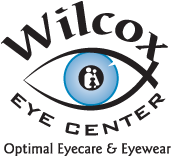
02 Oct Unlocking Healing Light: What is PBM? Shedding Light on the Power of Photobiomodulation for Your Eye Health
When sunlight hits our skin, it activates the synthesis of the important Vitamin D, a key vitamin for bone and teeth health as well as a healthy immune system. On the flipside, each fall and winter cases of seasonal affective disorder (SAD) emerge, a type of depression triggered by the lack of sunlight and characterized by fatigue and feelings of hopelessness. In our own eyes, especially, light is absorbed continuously through the day. Our eye cells convert the light energy entering our eyes to signals used in the vision part of our brain.
Knowing the life-giving power of light already, it is not difficult to fathom how light can be used to treat eye diseases. PBM stands for photobiomodulation, and it’s another alternative and complementary eye treatment option we offer at Wilcox Eye Center.
What is Photobiomodulation (PBM)?
Photobiomodulation (PBM) or photobiomodulation therapy (PBMT) is light therapy that stimulates eye cells, allowing for healing. If we break the word into its parts, we get photo (light) + bio (cell) + modulation (modifying/controlling an effect), so we have light modifying cell activity.
Specific wavelengths of low-level light, in the form of lasers or LED lights, target molecules (ATP or adenosine triphosphate) in the cell’s mitochondria to activate a domino effect of healing. The absorption of light energy leads to increased production of ATP, which is the molecule that cells use as an energy source.
ATP can’t work properly when the cell is damaged or stressed. The light therapy, in a sense, cleans up the cells (releases nitric oxide), so the ATP within the mitochondria can begin the healing process through better blood flow and reduced inflammation, and as a result, reduced pain.
Recall how sunlight helps plants grow. Just like plants use sunlight to make their leaves greener and healthier, our cells can benefit from specific types of light. Think of photobiomodulation as giving your body’s cells a bit of a “sunlight-like” energy boost, which can lead to improved healing, reduced pain, and better overall function. Just as plants need the right amount of sunlight to thrive, our cells can benefit from the right kind of light to function optimally.
History of PBM
Before the 20th century, scientists had noticed the healing properties of light, but they hadn’t quite harnessed it yet.
However, in the 20th century, scientist began manipulating light from lasers and other devices to see if it could help with various health problems. They found that certain types of light, when aimed at specific areas of the body, seemed to make cells work better. This was the beginning of photobiomodulation, although it had lots of different names then.
In the 1960s and 1970s, researchers began to have some breakthroughs. They discovered that low-level light could actually help cells produce more energy and heal faster.
Over the years, scientists studied different wavelengths of light and how they influenced various cells and tissues. They learned that not all light was the same – some colors of light were more effective than others in helping with healing and reducing pain.
As technology improved, devices were developed to deliver precise amounts of light to specific parts of the body. This made the treatment more controlled and effective.
What is photobiomodulation (PBM) used for?
Today, photobiomodulation is used for many purposes, from promoting tissue healing to reducing inflammation and even helping with conditions like chronic pain and skin problems.
Low level light therapy has been successful in many other areas of medicine, such as in the treatment of neurodegenerative diseases, chronic neck pain and joint pain, stroke, injuries or disorders of the central nervous system, and much more. Likewise, PBM is successful in various eye treatments, including age-related macular degeneration, diabetic macular oedema (edema), and amblyopia. Photobiomodulation might also have neuroprotective effects, helping to safeguard the health of nerve cells in the retina and the optic nerve. This could be particularly beneficial for conditions like age-related macular degeneration and glaucoma.
Two studies, in particular, have provided some exciting results for patients with age-related macular degenerations (AMD). Both studies were conducted by the Toronto and Oak Ridge Study of Photobiomodulation (TORPA), and both delivered positive results. In the first clinical study, TORPA 1, patients “showed clinically and statistically significant improvement in both visual acuity and contrast sensitivity.” Likewise, TORPA 2 continued to see positive results in patients with AMD and treated with photobiomodulation. Again, patients saw improved contrast sensitivity and visual acuity (over half improved by 5 letters, and 11.9% by 10 letters!). Additionally, they also saw a reduction in drusen volume while maintaining retinal thickness. The positive results were across the board for patients, suggesting that PBM is helpful at all stages of AMD.
How does photobiomodulation (PBM) work?
At Wilcox Eye Center we treat several eye diseases and concussions with PBM, an established and well-tested alternative and complementary treatment. Let’s take a look at three options.
Transcranial photobiomodulation: Depending on the problem, a patient can expect to come to the office and spend a few minutes per session wearing a device, designed by Vielight, that provides light treatment trans-cranially (across the head) and through the nose, where most blood vessels can be found. Positive results of transcranial photobiomodulation have already been achieved with patients suffering from concussions, Parkinson’s disease, and Alzheimer’s. While they may feel silly wearing the device, they can be assured no pain is involved.
BEMER: A second option is the BEMER device. This device emits far red and near infrared light. Although the BEMER device is primarily used in the delivery of pulsed electromagnetic fields or PEMF treatment, Dr. Wilcox can also use this ancillary red light to treat ocular and neuro-ocular conditions. The BEMER device is simply a circular disk that sits over the damaged areas, such as the head for concussion treatment, and it is connected by a cord to its power source. The combination of red light and infrared light effectively encourages the body’s natural healing mechanisms. Furthermore, we can activate the benefits of stem cells in your own body by placing the BEMER on your shin, for instance, and triggering stem cells to be released from your bone marrow.
PAINAWAY™ laser: Our third device is the FDA-cleared Painaway Laser. According to Multi Radiance Medical, “The super pulsed laser (905nm) produces high powered light in billionth-of-a-second pulses. The power of each pulse drives the photons deep into the target tissue. Multi Radiance Medical technology creates a high photon density, strongly reducing pain and improving micro-circulation.”
All three treatments provide a pain-free alternative to treating ocular diseases.
Benefits of PBM
Photobiomodulation has provided successful results for various eye disease and ailments, including age-related macular degeneration and dry eye:
What is age-related macular degeneration (AMD)?
AMD is a progressive eye condition that affects the central part of the retina called the macula, leading to gradual loss of central vision. By targeting the retina with specific wavelengths of light, photobiomodulation:
- Supports cell function: PBM stimulates the cells in the retina, including the photoreceptor cells responsible for vision. This stimulation improves their functioning and potentially slows down the degenerative process.
- Improves blood flow: By promoting blood circulation in the retina, more oxygen and nutrients flood the cells, aiding in their overall health and function.
- Reduces inflammation: Inflammation plays a role in AMD progression. PBM’s anti-inflammatory effects decrease the damaging effects of inflammation on the retina.
- Provides neuroprotective effects: PBM protects the nerve cells in the retina, helping to preserve their function and slow down the advancement of AMD.
Can PBM help with Dry Eye Syndrome?
Dry eye syndrome occurs when the eyes don’t produce enough tears or the tears evaporate too quickly, leading to discomfort, irritation, and vision problems. PBM for dry eye focuses on improving the health of the ocular surface and the function of the tear glands. PBM can help:
- Stimulate tear production: When targeting the glands that produce tears, PBM stimulates their activity, leading to increased tear production and improved eye lubrication.
- Reduce inflammation: Dry eye often involves inflammation on the eye’s surface. Photobiomodulation could help reduce this inflammation, leading to less discomfort and irritation.
- Enhance healing: Photobiomodulation’s ability to boost cellular energy and promote blood flow assists in the healing of the tissues on the eye’s surface, helping to restore its natural protective barrier.
- Improve eye comfort: By addressing the underlying causes of dry eye and promoting a healthier ocular environment, photobiomodulation could help alleviate the symptoms of dryness, burning, and discomfort.
Keep in mind that individual responses can vary, and the effectiveness of the treatment may depend on factors such as the severity of the condition. As always, we recommend making an appointment to truly understand all the options we offer here at Wilcox Eye Center.
Overall, photobiomodulation for the eye works by using light energy to stimulate cells, enhance their energy production, improve blood flow, reduce inflammation, and potentially protect nerve cells. Just like sunlight helps plants grow by providing energy, the right kind of light can help promote healthier eye cells and potentially improve visual function.
Avoid painful treatments and endless medications with alternative and complementary eye treatment options, such as photobiomodulation. At Wilcox Eye Center, we recognize that healing occurs in various ways. Let us find what works best for you. Make an appointment today for a consultation.

Sorry, the comment form is closed at this time.